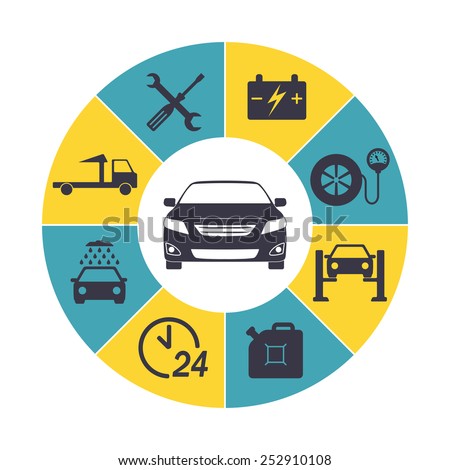Comprehending The Value Of Your Cars And Truck'S Warning Signals: What They Really Represent
Comprehending The Value Of Your Cars And Truck'S Warning Signals: What They Really Represent
Blog Article
Article Writer-Boye Dalgaard
When you lag the wheel, those glowing caution lights on your control panel can be a little bit puzzling. Do you understand what they're attempting to inform you regarding your automobile's health and wellness? Understanding the value of these lights is crucial for your security and the durability of your vehicle. So, the next time one of those lights appears, wouldn't you intend to decode its message properly and take the required steps to address it?
Common Warning Lighting and Interpretations
Determine common caution lights in your car and understand their meanings to make sure risk-free driving.
The most common warning lights include the check engine light, which indicates issues with the engine or discharges system. If this light begins, it's important to have your vehicle checked without delay.
The oil pressure advising light indicates reduced oil pressure, needing immediate attention to avoid engine damage.
A flashing battery light might recommend a faulty billing system, potentially leaving you stranded if not dealt with.
The tire pressure surveillance system (TPMS) light alerts you to low tire pressure, affecting car stability and fuel performance. Disregarding this could bring about hazardous driving conditions.
The ABS light suggests an issue with the anti-lock stopping system, endangering your ability to quit swiftly in emergencies.
Last but not least, the coolant temperature level alerting light warns of engine overheating, which can cause extreme damages otherwise resolved quickly.
Understanding these common caution lights will help you resolve concerns promptly and maintain risk-free driving conditions.
Significance of Prompt Interest
Comprehending the typical warning lights in your vehicle is just the first step; the relevance of without delay addressing these warnings can't be stressed sufficient to guarantee your safety when driving.
When a caution light brightens on your dashboard, it's your cars and truck's method of communicating a prospective issue that requires interest. Neglecting these warnings can cause a lot more serious problems in the future, endangering your safety and possibly costing you much more in repairs.
Prompt attention to advising lights can protect against malfunctions and crashes. For example, a blinking check engine light could suggest a misfire that, if left unattended, could trigger damages to the catalytic converter. Resolving this immediately can save you from a pricey repair service.
Similarly, https://ecutuningforbeginners27395.tkzblog.com/30167355/personal-experience-transforming-my-clunker-with-a-weekend-describing-session warning light could signal reduced brake fluid or worn brake pads, important components for your safety when driving.
DIY Troubleshooting Tips
If you notice a caution light on your dashboard, there are a couple of DIY fixing pointers you can attempt before looking for professional help.
The very first step is to consult your vehicle's manual to understand what the details caution light shows. Often the issue can be as easy as a loosened gas cap setting off the check engine light. Tightening the gas cap might settle the problem.
Another typical issue is a reduced battery, which can trigger various alerting lights. Examining the battery connections for corrosion and ensuring they're safe may fix the problem.
If a caution light continues, you can try resetting it by separating the car's battery for a few mins and afterwards reconnecting it. Furthermore, inspecting your vehicle's fluid levels, such as oil, coolant, and brake liquid, can help fix warning lights related to these systems.
Conclusion
To conclude, comprehending your automobile's warning lights is important for maintaining your car running efficiently and safely. By immediately resolving these notifies and recognizing what they indicate, you can stay clear of pricey repair services and possible failures.
Remember to consult your automobile's guidebook for particular details on each warning light and act accordingly to ensure a trouble-free driving experience.
Keep informed, remain risk-free when traveling!
